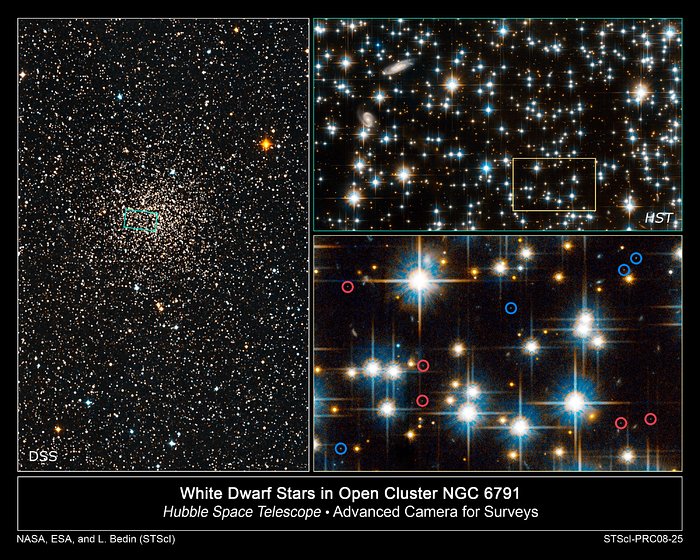White dwarf stars in open cluster NGC 6791
In studying the dimmest burned-out stars in globular star cluster NGC 6791, the NASA/ESA Hubble Space Telescope has uncovered a paradox: three different populations of stars exist in an object where all the stars should have formed at the same time out of an interstellar cloud of gas and dust.
[Left] - This is a ground-based telescopic view of NGC 6791, located 13,300 light-years away in the constellation Lyra. The green inset box shows the view with Hubble's Advanced Camera for Surveys.
[Top right] - The full Hubble Advanced Camera for Surveys field is full of stars estimated to be 8 billion years old. Two background galaxies can be seen at upper left.
[Bottom right] - A blow up of view of a small region of the Advanced Camera for Surveys field reveals very faint white dwarfs. The blue circles identify hotter dwarfs that are 4 billion years old. The red circles identify cooler dwarfs that are 6 billion years old.
Credit:NASA, ESA, and L. Bedin (STScI)
About the Image
About the Object
| Name: | NGC 6791 |
| Type: | Milky Way : Star : Grouping : Cluster : Globular |
| Distance: | 13000 light years |
| Category: | Star Clusters |
Colours & filters
| Band | Wavelength | Telescope |
|---|---|---|
| Optical V | 606 nm |
Hubble Space Telescope
ACS |
| Infrared I | 814 nm |
Hubble Space Telescope
ACS |
Notes: Left image captured using a ground-based telescope.
